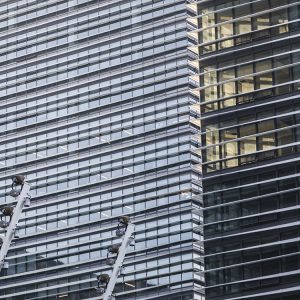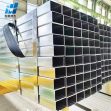Curtain wall selection guides
Being the outermost layer of the building envelope, curtain wall facade is your first line of defense against the elements. In that regard, it is important for you to select the specialized curtain wall contractor for professional installation, repair and maintenance when you are planning the building project in future. In addition, high-quality materials and skilled workmanship will prevent major damages to the exterior and interior surfaces while optimizing their lifespan, property value and appeal. How to select the right curtain wall materials and design would be a top consideration first before you will start the project.

Curtain Wall Materials
Most curtain walls are made with extruded aluminum members. By pushing or drawing a billet of aluminum through a die, curtain wall manufacturers can create members with a fixed cross-sectional profile. In most cases, a lightweight metal like aluminum offers good corrosion resistance and strength. Typically, aluminium curtain wall system is filled with glass for architectural purposes and to admit daylight. Solar gain control parameters such as thermal comfort and visual comfort are more difficult to control when highly-glazed curtain walls are used. Other common fill materials for curtain walls include stone veneer, metal panels, louvers, and operable vents or windows. Older curtain walls may use steel structural members.
Curtain Wall Specifications
Curtain walls differ from storefront systems in two important ways. Firstly, curtain walls are designed to span multiple floors in office buildings, hospitals, hotels, and academic buildings. Secondly, curtain walls incorporate critical design requirements such as thermal expansion and contraction, building sway and movement, water diversion, and thermal efficiency parameters for cost-effective heating, cooling, and lighting. In addition, curtain walls that divert water are also available. To control or reduce energy costs, thermal efficiency is an important consideration when you would like to select curtain walls in the project.
Types of Curtain Wall Systems
Curtain wall systems are typically designed with extruded aluminum framing and most commonly combined with materials like glass, stone veneer or metal panels. Louvers or vents may be added to allow light and air. They may be classified into categories based on fabrication and installation.
1. Stick or unitized system: in traditional stick systems, curtain mullions (frame), glass or opaque panels are generally installed and connected together piece by piece. In the modular or unitized system, larger units, typically one storey tall and one module wide tend to be assembled and glazed in the factory. They are then shipped and erected on the building. Finally, these vertical and horizontal modules are connected with the adjoining mullions.
2. Face-sealed, water-managed or pressure-equalized rain screen system: normally, pressure-equalized (PE) rain screen systems provide the highest levels of resistance to air and water infiltration in application, and water-managed systems would be the next most reliable choice for you. The major difference lies in the pressure equalization chamber between the exterior and interior barrier which can reduce water penetration and allow any moisture from within to weep out. Face-sealed systems on the other hand, depend on sealing integrity and are least reliable.
In recent years, curtain walling comes in a wide variety of configurations and finishes, and curtain wall manufacturers are continually innovating to create new curtain wall systems with better performance. Choosing the right curtain wall company to install, repair and maintain your building envelope would make all the difference in your building project in future.
Tel: +86 18202256900 Email: steel@fwssteel.com










